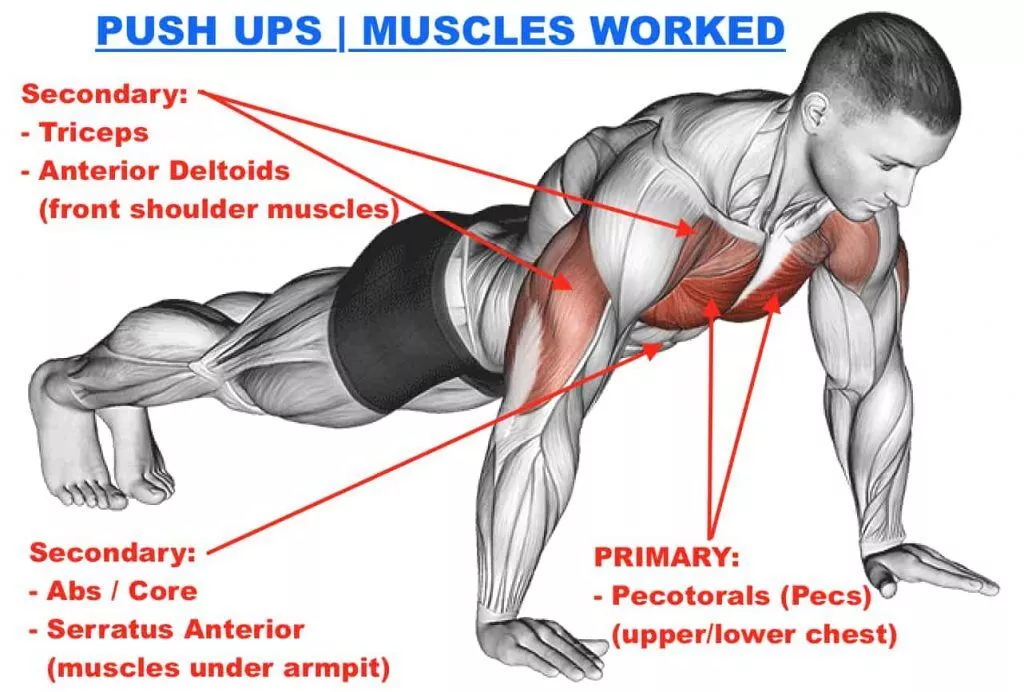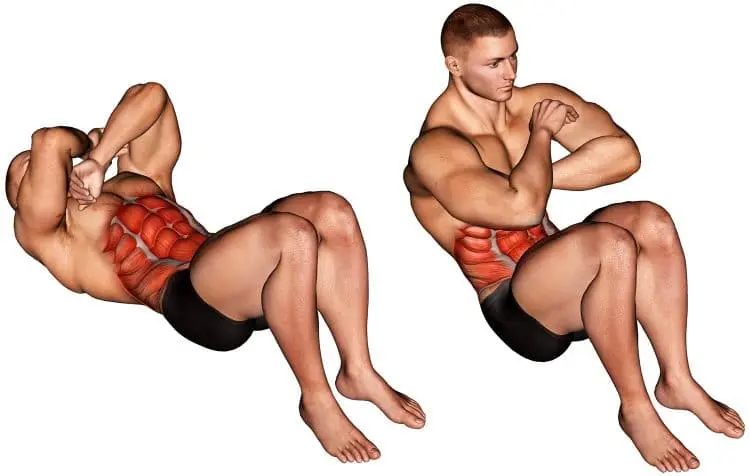Push ups and sit ups are two basic bodyweight exercises that work on different muscle groups in your body; they provide a comprehensive workout that targets both your upper body and core.
So how can you provide build muscle with push-ups and sit-ups?
Bodyweight exercises are one of the best things you can do to help tighten and tone your body and create a tremendous mentality, knowing that you can use your body to build your body.
The push-up may have been the first exercise you learned in gym class.
Most of us do the push-ups wrong, though, and we don’t maximize the exercise because we’re not utilizing the proper form.
The push-up exercise is a tremendous upper body and muscle builder because it works the chest, arms, core, a few legs, and your cardio conditioning when you increase the pace.
Army PRT Push up and Sit up drill
The Push up and Sit up drill develops upper body strength and endurance and prepares soldiers for the ACFT Test.
The duration of the exercise and recovery periods during this drill is designed to prevent injury caused by the prolonged repetition of poor-quality movements.
As the Push up and sit up workout drill is repeated, soldiers gain familiarity with proper movements and modifications when with a partner in formation.
The Push Up Workout Drill
Starting Position: The front leaning rest is the starting position for the push up.
- Hands are directly beneath the shoulders with fingers spread.
- The body forms a straight line from the head to the heels.
- The partner assumes a half-kneeling stance at the head of the exercising soldier.
- On the Command to Begin: The soldier begins the push up exercise, bending the elbows, lowering the body until the upper arms are parallel to the ground before returning to the front leaning rest.
- On the Command of “Stop, Change Position”: The soldiers switch places and roles.
- The partner monitors the technique and keeps count of the number of correctly performed repetitions for 30 to 60 seconds.
- On the Command of “Stop, Position of Attention, Move,” the soldiers assume the position of attention.
The Sit Up Workout Drill
- Following the Command “The Sit up, Starting Position, Move,” The exercising soldier assumes the sit-up’s starting position, which is the supine position with fingers interlaced behind the head, knees bent to 90 degrees, and feet flat on the ground.
- The partner assumes a half-kneeling position at the exercising soldier’s side.
To strengthen the abdominal muscles and prevent overuse of the hip flexors and lower back, the exercising soldier’s feet are not anchored and should remain stationary throughout the exercise.
- On the Command of “Stop, Change Position,” the soldiers switch places and roles.
- The partner monitors feet and counts the number of correctly performed repetitions for 30 to 60 seconds.
- On the Command of “Stop, Position of Attention, Move,” the soldiers assume the position of attention.
Here is the movement in real-time with different modifications demonstrated for each exercise to accommodate soldiers as they fatigue.
- The push up exercise may be modified by using the six-point position.
- The six-point position with hands in a fist, wrist straight, and Sustained front leaning rest, or the soldier may modify the front leaning rest position while resting on the elbows.
- The sit up exercise may be modified by performing a partial sit up with the hands across the chest, reaching the hands to the knees, or using the hands to pull up to the thighs, then release for the down movement.
How to do Push ups Properly for Beginners
- Start in a high plank position: Your palms flat on the floor, hands shoulder-width apart, with shoulders stacked directly above your wrists.
- Maintain a straight line from head to heels: Your feet should be together or slightly apart (about hip-width), and your body forming a straight line from the top of your head to your heels.
- Lower your body: Bend your elbows and lower your body toward the ground.
- Push up: Elbows go into the body, and then we breathe and push ourselves off the ground with our breath.
- Inhale going down, exhale coming up.
- Repeat
And that push-up is the basic push-up. We’ve got about 1,000 variations.
How to do Sit Ups for Beginners
Follow the following steps to do the sit ups:
- Positioning: Begin by lying on your back, your knees bent, and your feet firmly on the ground to stabilize your lower body.
- Arm Placement: You can loosely cross your arms across your chest or cup your hands behind your head. Just be careful not to push on your neck when you’re doing your sit up.
- Ascent: When ready, engage your core and exhale as you bring your upper body to your knees.
- Descent: Once you reach the top with your core still engaged, slowly inhale as you return to your starting position.
- Repeat: Engage the core and exhale as you bring your upper body up to your knees. Once you reach the top, the core is still engaged; slowly inhale as you return to your starting position.
And that is how to do a sit-up. It engages our core, and we’re also working our chest, shoulders, upper back, and lower back.
Muscles Worked in Push Up and Sit Up Workout Exercises
Pushups:

- Pectoralis major and minor (chest muscles)
- Triceps (arm muscles)
- Deltoids (shoulder muscles)
- Abdominal and lower back muscles (core)
Situps

- Rectus abdominis (major abdominal muscles)
- Lower abdominals
- Obliques (side muscles of the abdomen)
The Power of the Push-Up and Sit-Up Combination
A workout routine that combines push-ups and sit-ups is a robust exercise that targets multiple muscle groups at once. While push-ups focus on strengthening your upper body and core, including arms, chest, and shoulders, sit-ups primarily target your abdominal muscles, enhancing core strength and stability.
Enhancing Your Push-Up and Sit-Up Routine
To get the most out of your routine, consider these strategies:
- Maintain a steady pace and avoid rushing through the movements.
- Focus on engaging the targeted muscles during each phase.
- Emphasize proper form over high rep counts to reduce the risk of injury.
- As you become more skilled, increase the intensity by adding more reps or reducing rest periods between sets.
The Benefits of a Push-Up and Sit-Up Routine
Incorporating a push-up and sit-up routine into your workout plan comes with various advantages:
- Full Body Muscle Engagement: This routine works multiple muscles, including your chest, arms, shoulders, core, and hip flexors, offering an efficient way to get a full-body workout in a short time frame.
- Increased Strength and Endurance: Regular push-ups and sit-ups can significantly increase your upper body and core strength. Over time, this improves muscular endurance, enhancing performance in other workouts and physical activities.
- Improved Core Stability: Sit-ups, in particular, are essential in strengthening your core muscles, which are vital for maintaining balance and stability. A strong core also makes daily activities easier to perform.
- Boosted Caloric Burn: Because this routine engages multiple muscle groups, it can increase calorie burn, aiding in weight loss and improved body composition.
Conclusion
Adding a push-up and sit-up routine to your regular workout regimen can lead to noticeable improvements in strength, endurance, core stability, and overall fitness.
Its practical and versatile nature makes it a perfect exercise routine that requires no special equipment and can be done anywhere.
- Empowering Transactions: Navigating Firearms Sales with Proper Documentation - April 8, 2024
- Army PRT – Preparation and Recovery 2024 - March 18, 2024
- Active and Reserve Components 2024 - March 6, 2024
